It all comes down to CHALLENGE.
If it challenges you, it will change you.
Now that doesn’t mean go make every exercise as hard as humanly possible. Or constantly change up moves every workout without any clear progression.
It just means that to create change, aka RESULTS, you need to force your body to have to adapt and grow stronger.
And that means using moves that challenge you!
The most common way we make exercises more challenging is by adding weight.
While heavier weights can be a great way to force your body to have to adapt and grow stronger, it’s all too often the only tool we rely on.
There are four other very basic ways to mix things up and make moves more challenging including changing up:
- The TYPE of load used
- HOW you load the move down
- The variation of the exercise used
- The tempo of the movement
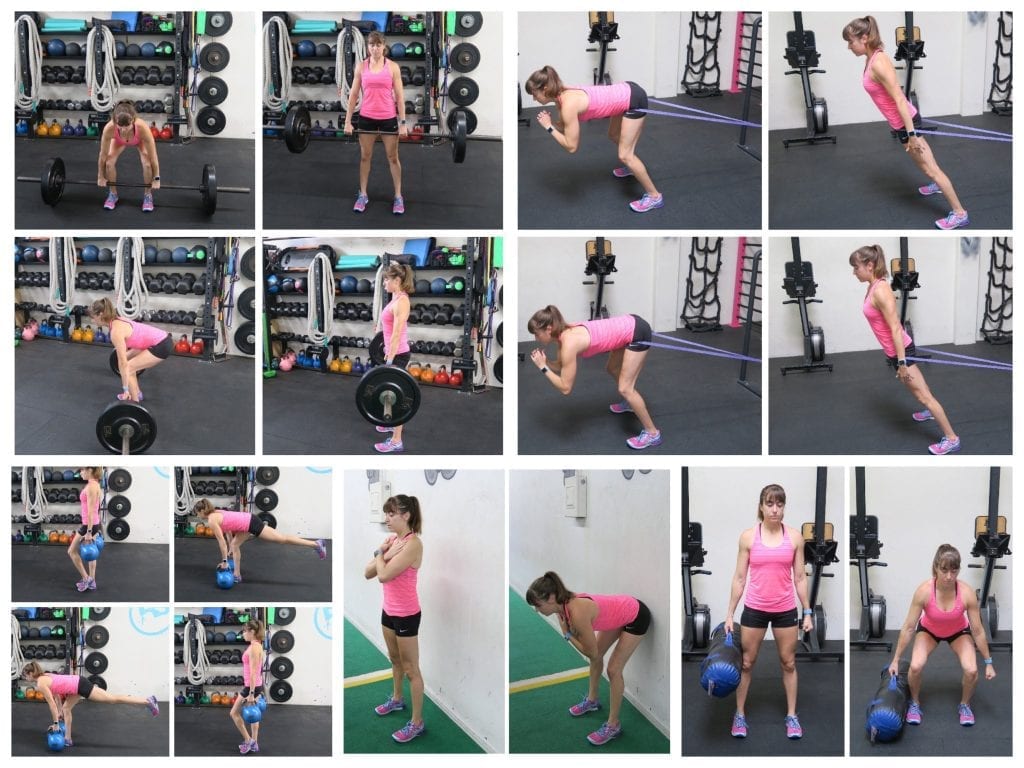
By varying how we even challenge our body, instead of always just focusing on more weight, we can strengthen weak points and avoid hitting a plateau.
(This article is an excerpt from my Training Black Book). The Black Book is all about workout design – whether you are looking to improve your own workouts or create workouts for clients, classes or small group training sessions. It even comes with over 50 workout templates and CEUs for Trainers!)
Using Loads aka Weights:
When it comes to using weights, it isn’t just about always going heavier.
You do need to use a weight that challenges your body if you want to gain lean muscle mass.
Using light weights over and over again is going to do absolutely nothing, except waste time.
Now exactly what is “light” and what is “heavy” though will depend on a few things:
- Your fitness level
- The exercise being performed
- The volume you’ll perform
- The muscles being used
- The type of weight equipment being used
- Where you hold or place the load
Sometimes going LIGHTER may be needed if we use different types of loads or change where we place or hold the load.
This is why becoming only focused on going heavier may not always lead to the best results.
Actually often our obsession with lifting heavier, and I know I’m guilty of this too, will prevent us from using these other options because we have to reduce loads to do the movements correctly.
But by changing up the type of equipment we use and where we hold the loads we can challenge our bodies in different ways, which may be just what we need to avoid injury and avoid plateauing.
By changing the type of equipment used we can create more instability.
For instance, the weight in a sandbag will shift while the weight of a barbell won’t.
Or we could choose to use a resistance band instead of a dumbbell. The resistance band applies more resistance at the point in an exercise where we are strongest so that we challenge ourselves more throughout the entire move.
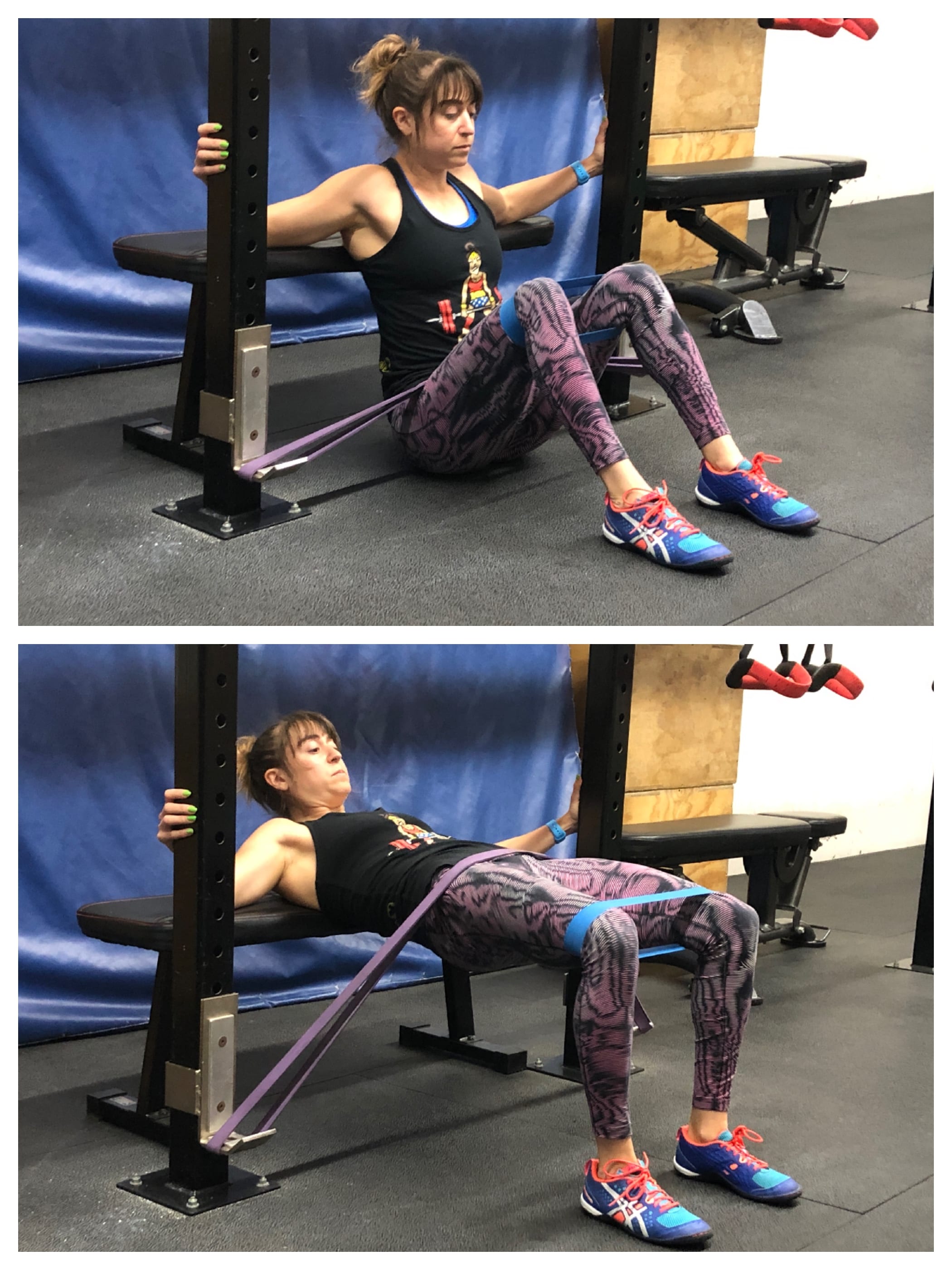
By changing where we hold the weights, we can also challenge our bodies in different ways, making moves even more core intensive.
For instance, front-loading a lunge, holding a weight up at your chest, will make it more core intensive than holding two dumbbells down by your sides.
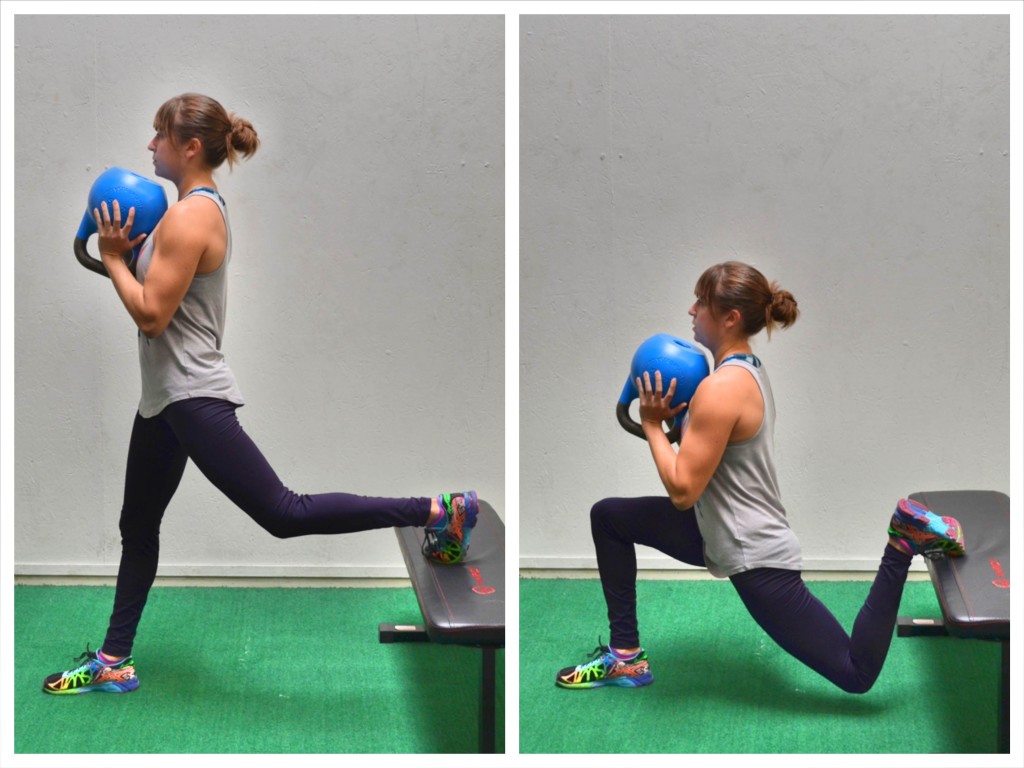
However, if you want to use heavier weights to challenge your legs more, you will need to hold dumbbells down by each side. Holding dumbbells down by each side will also work your grip more.
So it’s not that you always want to use lighter weights. It’s just important to remember this is just one option!
You could also simply hold one dumbbell on one side when you lunge, either up at your chest or down by your side.
By unilaterally loading a move and holding a weight on only one side, you can work on core stability and anti-rotational strength.

You can also use unilateral loading to help you correct imbalances between both sides and even different muscle groups.
And another variation of unilateral loading you can use is called uneven loading.
You could use two different weights on each side to force your core to have to work hard to maintain proper alignment with uneven loads on each side.
With all of these different ways to load, you can change the benefits you get from the same basic moves.
And even if you are really focused on lifting more, sometimes using these variations in loading during your accessory lifts can help you strengthen your weak points to not only help you improve your overall strength but also avoid injury.
Plus, it is important to remember that, while we may have specific fitness goals we want to achieve, EVERYONE also wants to move and feel better in every day life.
And most of the weights we pick up and lift in every day life aren’t stable or easy to grip – they are awkward.
So the more variety in the loads we use during our workouts, the more prepared we are to take on any challenge life throws at us!
Using Exercise Variations:
Too often when we need a new challenge, we start looking for “new” moves, instead of considering how we can make tweaks to the current ones to create change.
By changing up even how we do the exercises themselves, we can challenge our body.
I’ve already mentioned the importance of Unilateral Exercises, but they can be one of the simplest ways to create a new challenge for your body.
You can also vary exercises by:
- Increasing range of motion
- Creating more instability
- Slightly adjusting alignment and form
- Combining with other moves to create hybrids
Each of these will change how the exercises benefit you so you can choose variations that work for your specific needs and goals.
For instance, you may increase range of motion, especially if you really want to strengthen and gain mobility.
The bigger the range of motion you work through, often the harder the move will be.
To increase your range of motion, you may perform a Get Up Lunge where you actually move to fully kneeling on the ground before standing back up.

This not only makes you lunge all the way down, but even takes out any momentum you may have as you have to come to “rest” while kneeling before standing back up.
Another way to increase range of motion is to place your hands or feet up on something.
For instance a Decline Push Up. Because your feet are raised, the push up will be more challenging.
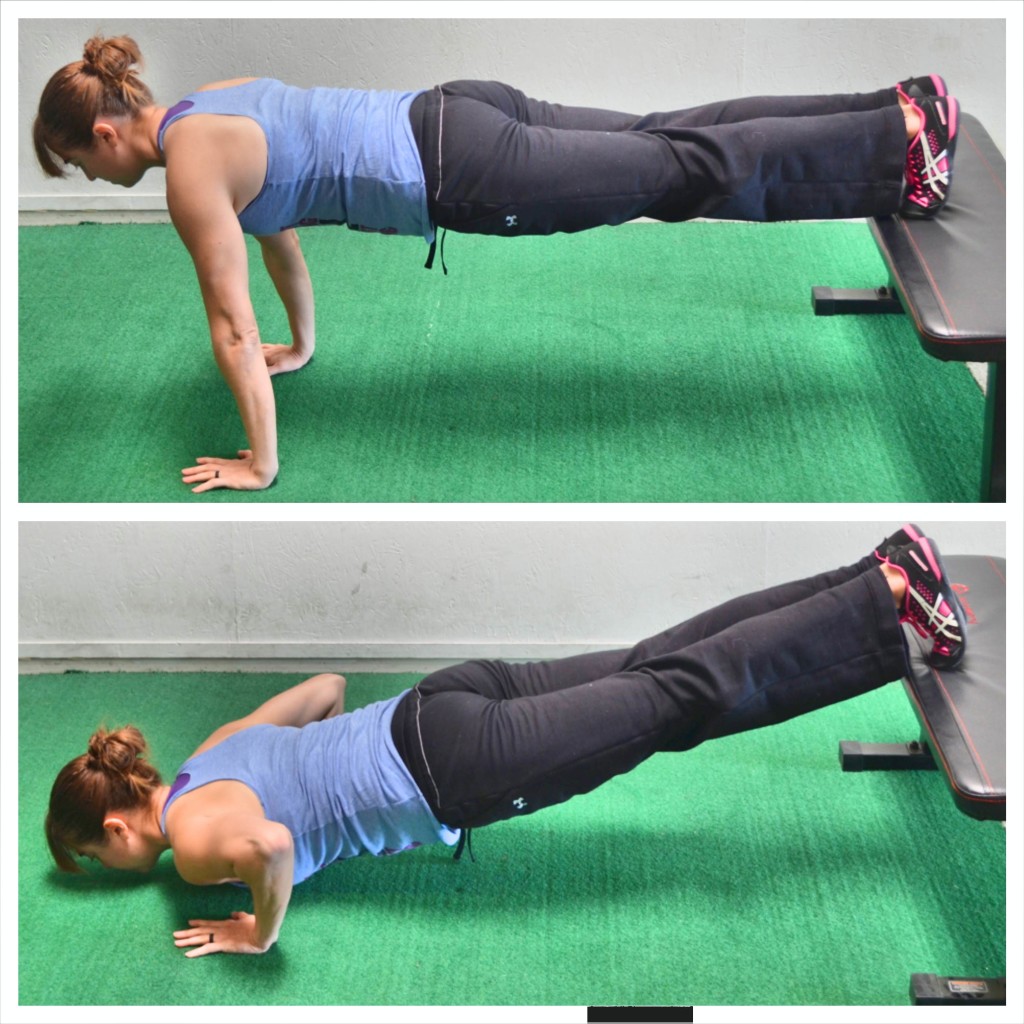
Or you could do a Deficit Lunge, standing on a plate weight or box. When you lunge back, you will have to sink deeper to touch your knee down than you would if both feet were on the ground. This forces your legs to work through a bigger range of motion and can even improve your hip mobility.
Increasing the range of motion is a great way to make sure you build strength through the full range of motion you’ve work so hard to create with your foam rolling and stretching.
Another way to use range of motion is also to limit it.
You can work on only part of a full range of motion to target muscles in different ways OR even prevent yourself from “relaxing” at any point, and stay within a “working” range, to increase your time under tension.
For instance, with a Band Hip Rotation, you may rotate back toward the anchor point, BUT still keep tension on the band so even at the “end” of the move your abs are working instead of fully relaxing and releasing.

Same goes for Inverted Rows.
You could choose to protract and relax out at the bottom of each row to work on that initial engagement OR you could maintain the engagement even at the bottom of the row to force your back to work without getting to relax during the reps.
Along with changing the range of motion, you can also create more instability in exercises to make them more challenging while also forcing your core to work harder.
Creating instability can mean both adding in equipment or more unstable surfaces or even changing your “base” for the movements.
For instance, adding in a foam pad can be a common way to add instability and force all of those little muscles to work from the ground up.
If you wanted to create instability in your push ups, you could also change your “base.”

You could raise one leg up off the ground. Or stagger your hands. These little tweaks force your body to work harder to stabilize and can even target slightly different muscles.
All of these little tweaks can use the same basic moves just in different ways to help you really focus in on what is important for you and your goals.
Even exact form is variable and making tweaks to our form can help us, not only challenge our body more, but work muscles in different ways.
A little chin tuck and flexion of your spine during Barbell Hip Thrusters may help you engage your glutes better.
Or when doing a walking lunge, stepping out at a slight angle, can work your glutes more.
Or rounding your upper/mid back during hyperextensions can help you focus in on your glutes.
All of these slight adjustments to form can help you challenge your body in different ways.
This even relates back to the type of grips you use on moves – neutral, palms facing in, underhand, palms facing you, or overhand, palms facing away.
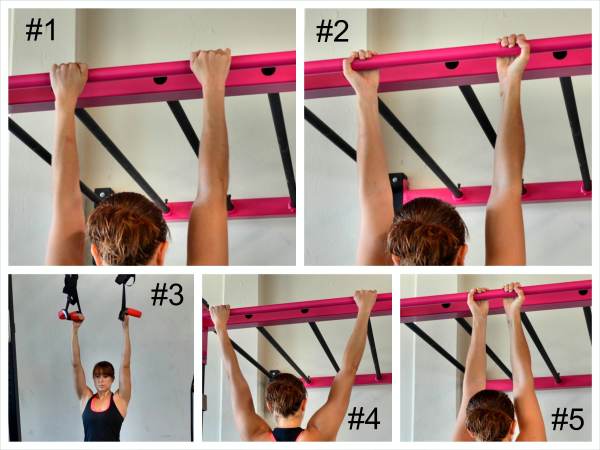
When you change your grip with pull ups or rows, not only can it make it “harder” but it can also change the specific muscles you recruit and which carry more of the load.
The point is, if you’ve adapted or want to accomplish a specific goal, you can tweak moves to work for you!
And if you find you really want to challenge your body in a new way, or work on those weak points, sometimes even combining moves together into a Hybrid Exercise is key.
With Hybrid Exercises, you can take basic compound moves and not only work more muscles at once, but also work your body in multiple planes of motion.
By working more muscles at once, and even working in different planes of motion, you can challenge your body in new ways. And you don’t even need weights at all!
You can also use these hybrid moves to combine compound and isolation exercises to focus in more on those weak points.
Hybrid moves like this are a great way to create challenging bodyweight workouts for both cardio routines and even full-body strength. They also make great accessory lifts to help us build functional strength!
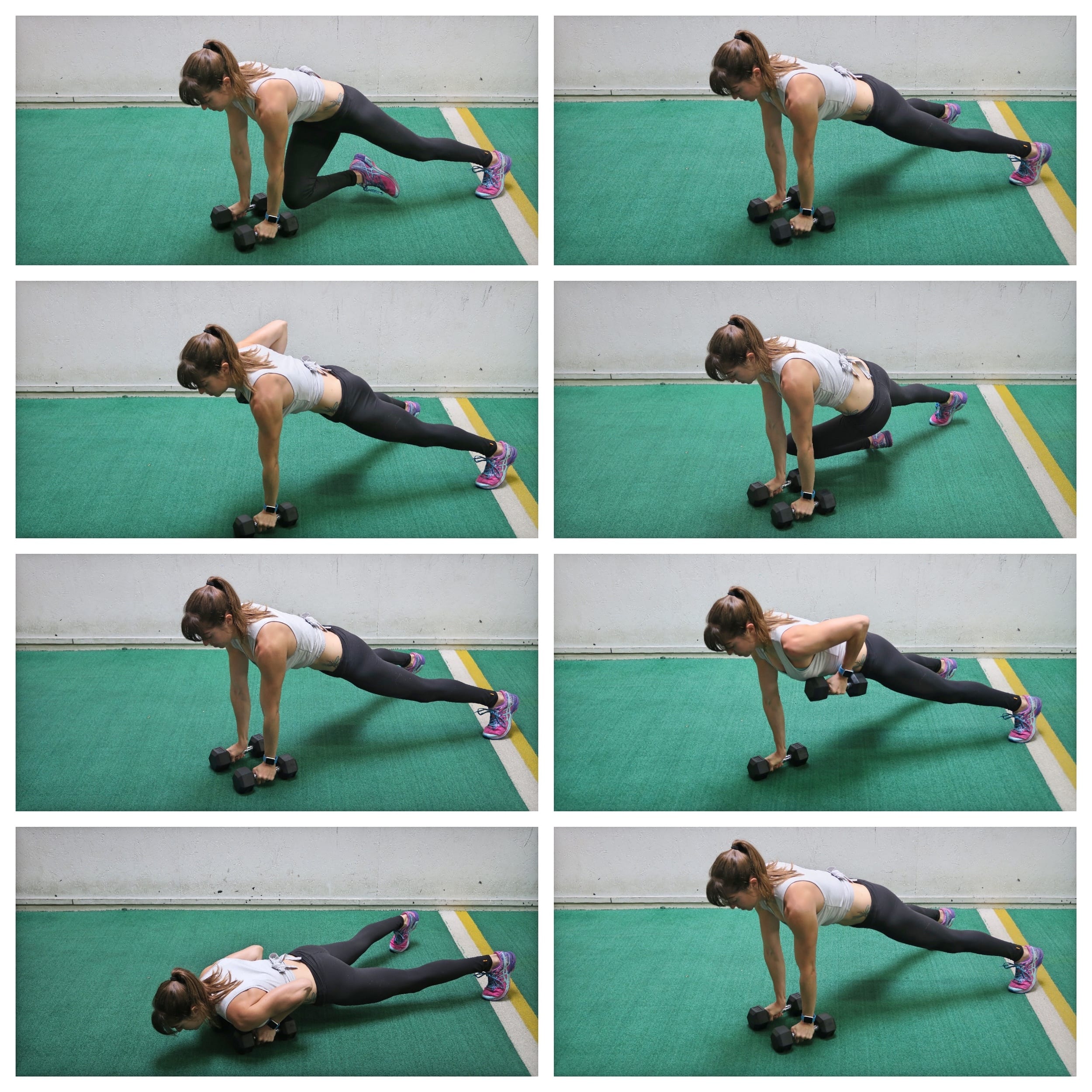
Using Tempos:
When we change up the tempo of moves in our workouts, it is most often to make them faster and more explosive, especially for our cardio routines.
And that is a great way to challenge our bodies.
Not to mention we can even use concentric only lifts sometimes to help us build strength WITHOUT creating as much muscle tissue damage so we need less time to recover and can actually train more frequently.
But slowing down movements or even using holds, can also help us make great strength gains and build stability.
Actually spending more time under tension can help improve our strength and build lean muscle mass, especially when we slow down the eccentric portion of the lift.
Changing up the tempo of moves is one of the best way to build strength when using only bodyweight exercises.
Increasing our time under tension and even slowing down the eccentric portion of the lift can cause more muscle tissue damage. And this increase in damage means our body has to repair and grow stronger!
We also can’t forget about holds.
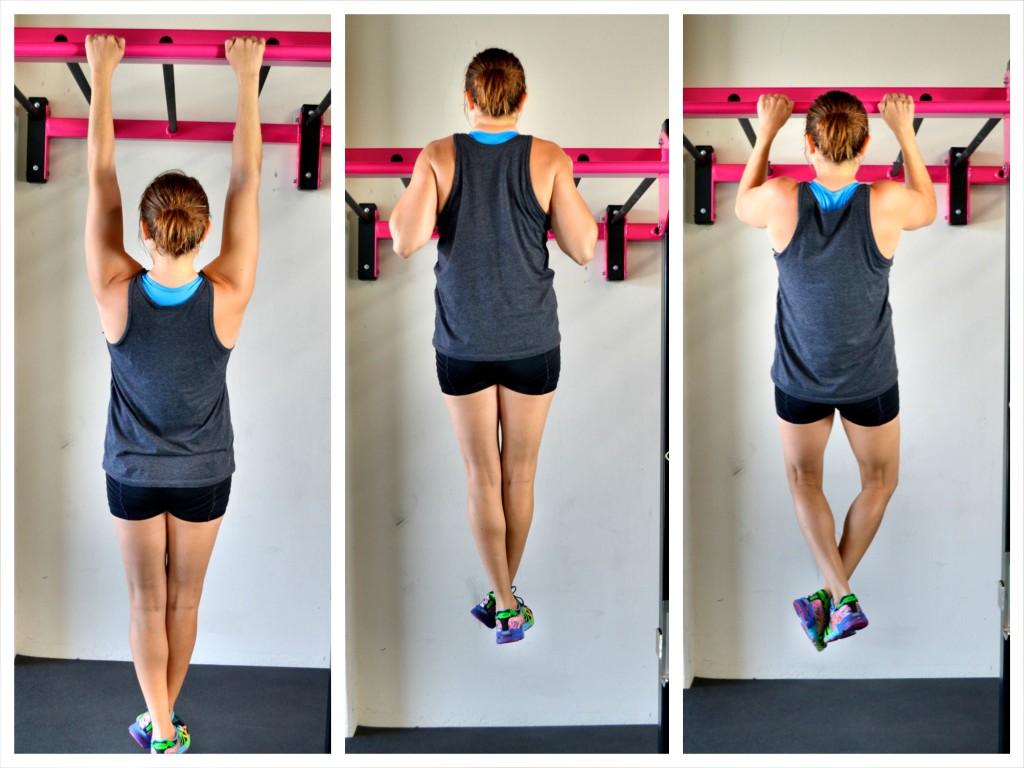
When we are talking about tempo, there are three parts of the move we can change up – the concentric, eccentric and ISOMETRIC.
We can also add in pauses to movements to increase time under tension!
These pauses can be a great way to help us get over stick points in movements, where we tend to fail.
For instance, holding right at the point you usually fail to move past in a pull up.
Or the pauses can be used to improve our mobility.
By performing an isometric exercise, or pausing at that end range of motion, we can help build strength at that position to maintain the mobility we’ve created.
An isometric hold can also be a great way to establish the mind-body connection and create a better pump in muscles.
Remember there are three portions to every lift and changing up the tempo can mean speeding up or slowing down any, or all, of those pieces!
Using These Tools:
There are so many ways you can adapt exercises to meet your needs and challenge your body in ways that will be tailored toward your specific needs and goals.
Challenging yourself isn’t only about adding weight.
You can even combine many of these together to get killer results without adding an ounce of extra load.
For instance, you could do a Balance Lunge (back foot up to increase range of motion) with a 3 count eccentric lower down (to slow down the tempo) to challenge yourself.
Or you could choose to use loads but place a sandbag over one shoulder as you do a Step Up. The weight may be lighter than you would use if you held dumbbells down by your sides.
But because you would be using an unstable weight, and unilaterally-loaded weight, your core will have to work harder. And instead of going heavier, you could also increase the box height to not only make the move harder, but even target your glutes more.
There are endless ways you can combine these different tools. But the key is to pick ones that address your needs, your areas of weakness and your goals.
Remember, you don’t always need to, or shouldn’t always even, just add weight!
Design Workouts That Work!
Learn more about my Training Black Book!


